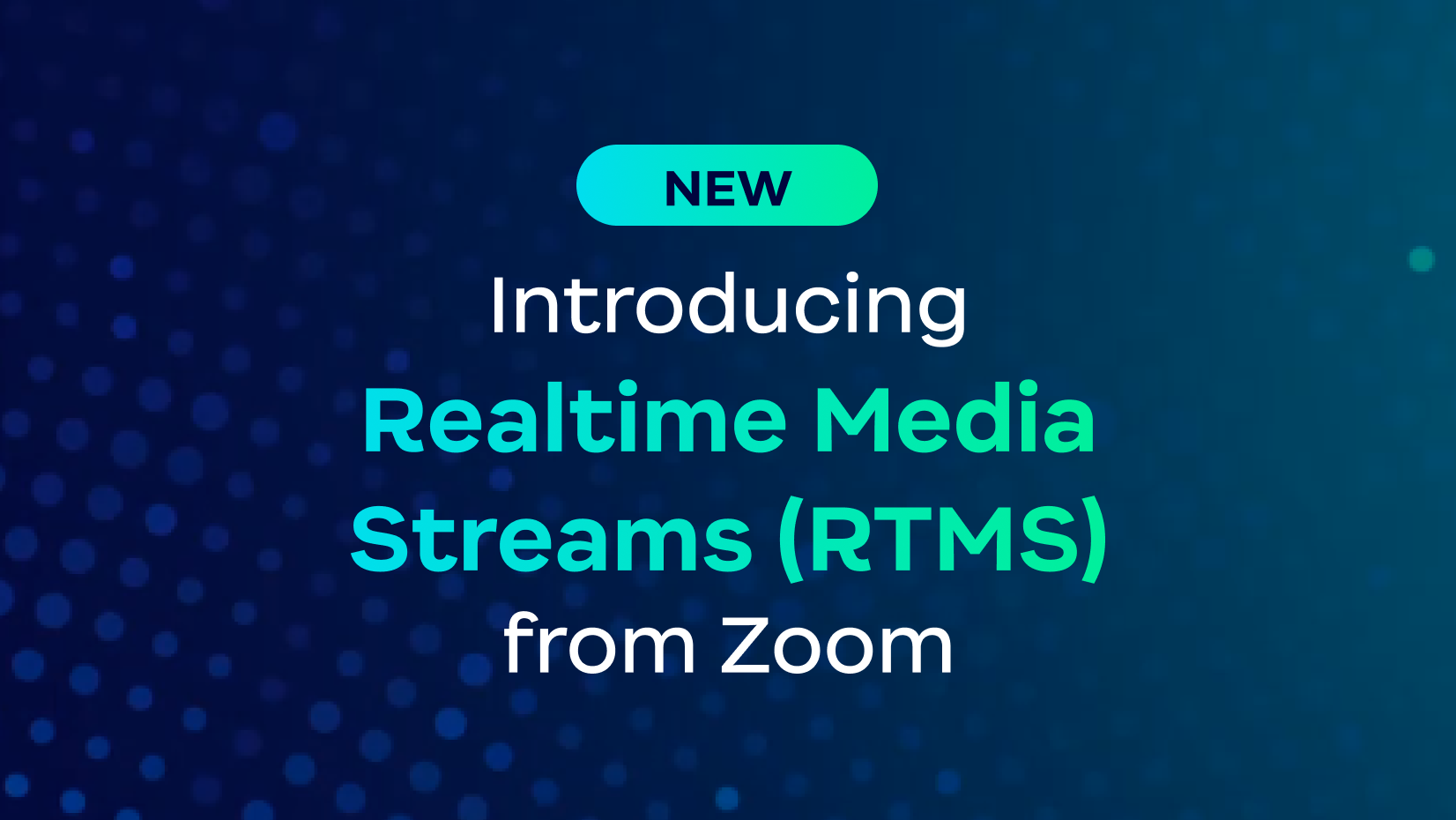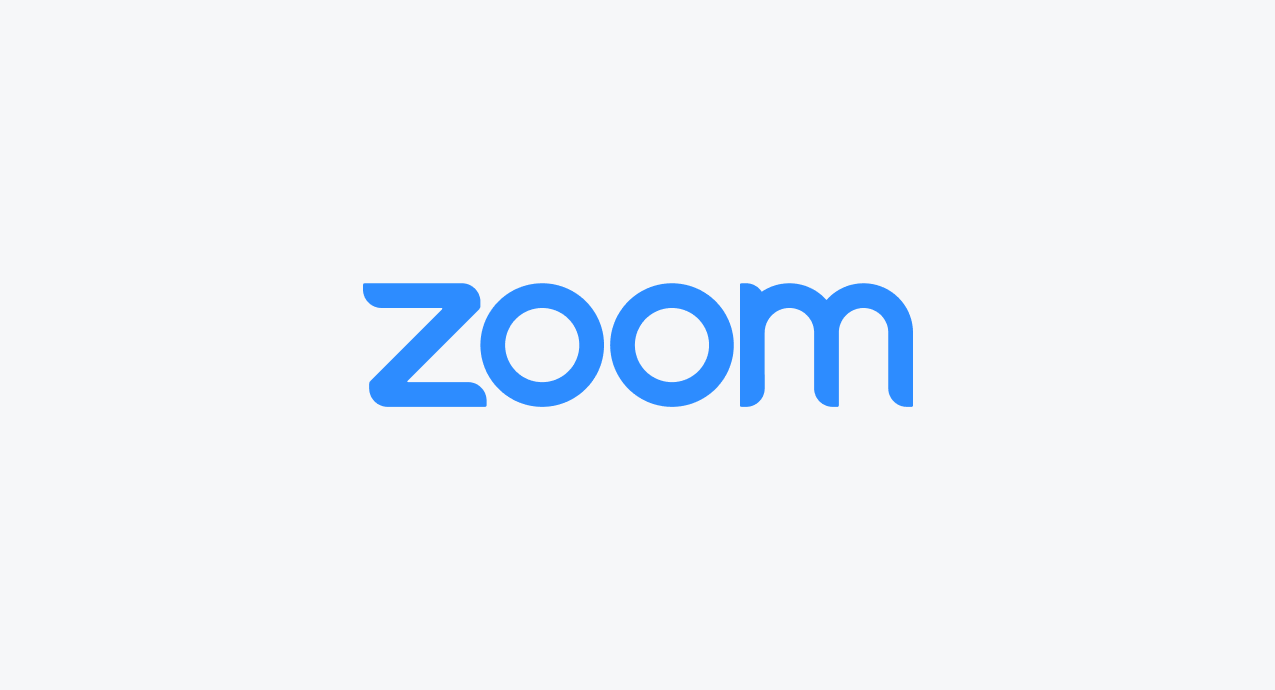
Zoom enables next-gen AI solutions with Realtime Media Streams
Realtime Media Streams gives developers and organizations secure, real-time access to audio, video, and transcript data directly from Zoom Meetings.
Updated on November 06, 2020
Published on April 03, 2020


Eric founded Zoom in 2011 to deliver happiness and bring people together in a frictionless video environment. Zoom’s communications platform continues to transform the way global organizations connect, communicate, and collaborate. As the company’s chief executive, Eric led Zoom to one of the highest-performing tech IPOs of 2019.
Business Insider named Eric one of the Most Powerful People in Enterprise Tech in 2017. In 2018, Glassdoor recognized him as the top CEO for large U.S. companies. In 2019, he was recognized in the Bloomberg 50 as a leader changing the game in global business. Time Magazine named Eric its 2020 Businessperson of Year as well as one of the 100 Most Influential People of 2020. He was also named Comparably's Best CEO for Diversity in 2021.
Prior to founding Zoom, Eric was corporate vice president of engineering at Cisco, where he was responsible for Cisco's collaboration software development. Eric was also one of the founding engineers and vice president of engineering at Webex.
Eric is a named inventor on 11 issued and 20 pending patents in real-time collaboration.
We want to address research published by University of Toronto’s Citizen Lab this morning. We’ve taken steps to address two primary topics — geo-fencing and meeting encryption — and are sharing these steps as part of our ongoing commitment to improve security and privacy.
In our urgency to come to the aid of people around the world during this unprecedented pandemic, we added server capacity and deployed it quickly — starting in China, where the outbreak began. In that process, we failed to fully implement our usual geo-fencing best practices. As a result, it is possible certain meetings were allowed to connect to systems in China, where they should not have been able to connect. We have since corrected this, and would like to use this blog post to explain how our system typically works, where our misstep occurred, and how we will prevent these kinds of problems in the future. We have also been working on improving our encryption and will be working with experts to ensure we are following best practices.
We appreciate the questions we are getting, and continue to work actively to address issues as we identify them. As video communications become more mainstream, users deserve to better understand how all these services work, including how the industry — Zoom and its peers — manages operations and provides services in China and around the world.
Zoom is able to meet its Customer and user's needs through its own global network of seventeen colocated data centers, as well as through public cloud data centers, which are predominately operated through Amazon Web Services (“AWS”). The Services are designed to work in a way that any information entering our ecosystem is routed through the data center that is nearest to the user sending or receiving the data. For example, for a US user, Zoom's systems first try to connect to one of our five US data centers for the best connection. If there is no response within a specific time-period (usually 5.5 seconds) from any of the five US data centers, then additional back-up bridge servers around the world are pinged.
During normal operations, Zoom clients attempt to connect to a series of primary datacenters in or near a user’s region, and if those multiple connection attempts fail due to network congestion or other issues, clients will reach out to two secondary datacenters off of a list of several secondary datacenters as a potential backup bridge to the Zoom platform. In all instances, Zoom clients are provided with a list of datacenters appropriate to their region. This system is critical to Zoom’s trademark reliability, particularly during times of massive internet stress.
Even during these periods of high traffic, Zoom’s systems are designed to maintain geo-fencing around China for both primary and secondary datacenters — ensuring that users outside of China do not have their meeting data routed through Zoom’s mainland China datacenters (which consist of infrastructure in a facility owned by Telstra, a leading Australian communications provider, as well as Amazon Web Services).
However, in April, as we deepened our security reviews in response to the dramatic increase of use during the pandemic, we realized that we had mistakenly added our two Chinese data centers to a lengthy whitelist of backup bridges, potentially enabling non-Chinese clients to — under extremely limited circumstances — connect to them (namely when the primary non-Chinese servers were unavailable). We then removed these data centers from the whitelist.
Importantly:
We recognize that we can do better with our encryption design. Due to the unique needs of our platform, our goal is to utilize encryption best practices to provide maximum security, while also covering the large range of use cases that we support. We are working with outside experts and will also solicit feedback from our community to ensure it is optimized for our platform. In accordance with the action plan I outlined in my note to our users on 4/1, we expect to have more to share on this front in the coming days.
We recognize how important it is that our systems operate in the manner that we intend — and that is expected of us from our users, even as we all adjust to the new demands this pandemic has brought us all. As part of the security program we announced earlier, we are implementing additional process and technical controls around our inter-region isolation.
We have an immense responsibility to get things right, particularly at a time like this. We know we have a long way to go to earn back your full trust, but we are committed to throwing ourselves into bolstering our platform’s security with the same intensity that we committed to ensuring that everyone would be able to remain connected.
Editor's note: This post was updated Nov. 6, 2020, to clarify language around customizing your data routing settings.